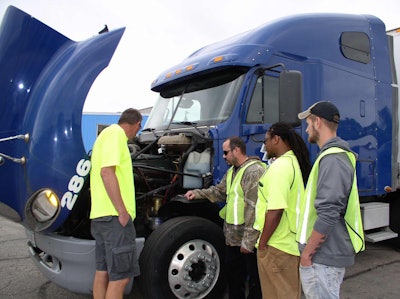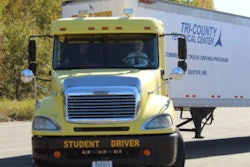
On Dec. 1, 1958, a Catholic grade school fire in Chicago killed 92 students and three nuns and injured dozens more. Preceding this fire, many older schools and public buildings had been exempted from the newest fire safety upgrades, including alarms, fire-resistant materials and more.
It’s not difficult to imagine public arguments against the costs of those upgrades. Yet shortly after the fire, a nationwide wave of reform overpowered the resistance. Safety won out.
The recent Humboldt Hockey team bus collision with a tractor-trailer in Saskatchewan with devastating results, including more than a dozen fatalities, appears to be having similar effects. The crash has elevated discussions around proper driver training and highway safety across Canada. One proposal is to increase the number of hours in class and behind the wheel to 70 hours in Saskatchewan. Ontario has already adopted a mandatory pre-CDL program slightly exceeding 100 hours.
For many years, our trucking leaders have followed a pattern of behavior in CDL driver training and continuing education similar to that of leaders responsible for school safety in 1958. Failure to make the needed investment in driver training is affecting not only highway and workplace safety, but it has lowered the value of entry-level CDL holders to near zero as the industry cuts corners to produce drivers who merely hold a CDL. And this is defined as driver training.
The FMCSA has put in place a regulation defining the minimum requirements for pre-CDL training and the final rule is now effective. Implementation of it is ongoing, with full compliance required in February of 2020.
Reading the regulation online, I see it provides something of a blueprint on which to model a truck driving training program, with core classroom curricula and a variety of points on behind-the-wheel and simulator training, however with no set minimum number of behind-the-wheel hours. Yet when I read the supporting filings with the rule, they seem to merely tell a tale of companies lobbying for their own interests. Too many seemed as if to totally ignore the subjects of safety and comprehensive training as they focused on the expected cost in the first nine years of $3.66 billion. I imagine all parties wondered, primarily: Who’s going to pay?
The truth is society pays the price one way or another. Either we invest up front for prevention or we ignore problems at the cost of lost lives, injuries and lost productivity.
How can this rule accomplish its intended goal with what appears to be self-certification by the schools and the trainers executing the standards? How can it meet the goal when the amount of training a person receives in the end is to be determined by someone hired to be a trainer who has held a CDL for as little as two years and has as little as two years of on-highway experience?
I called a friend in Manitoba who has 25 years’ experience in trucking and has been a company trainer. As we discussed the Humboldt Hockey team accident, he spoke of the fly-by-night CDL schools. The new U.S. rule does not appear to have any way to prevent this sort of practice.
You’d think it would establish standards for testing and certifying teachers, and that the veteran driver would conduct training beyond just passing CDL requirements. That would include apprenticeship time, the weeks and months assigned to someone who should have the experience needed to teach drivers more than the bare minimum of doing the job.
This rule has left me disappointed in our leaders in government and in trucking and training businesses. They are sidestepping an opportunity to take action for a sounder solution to safety problems. Without a groundswell of reform brought about by an unfortunate tragedy, such as the Humboldt Hockey team accident, can we expect real improvement?










